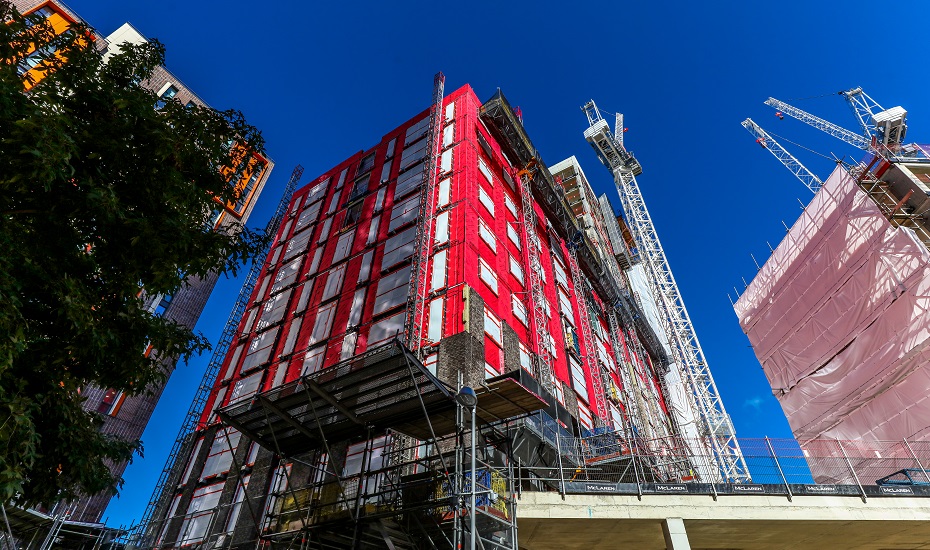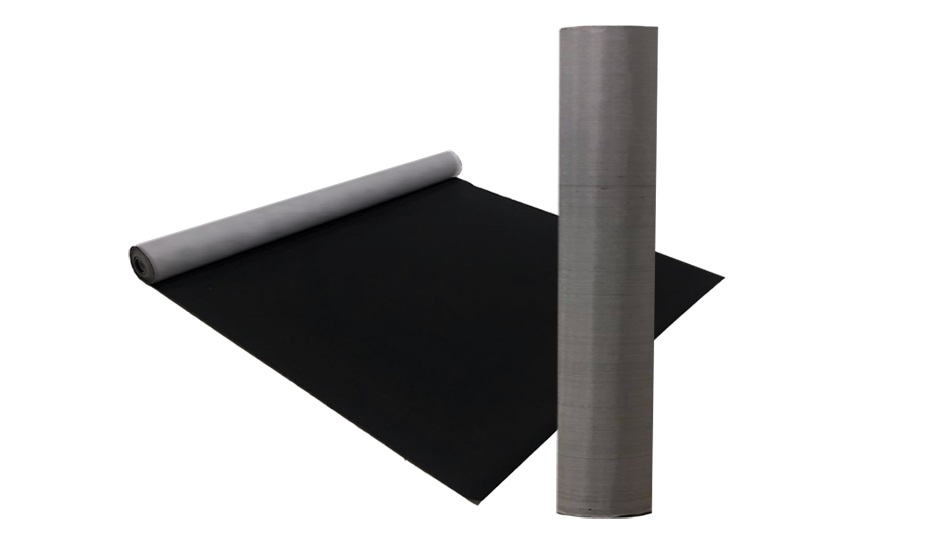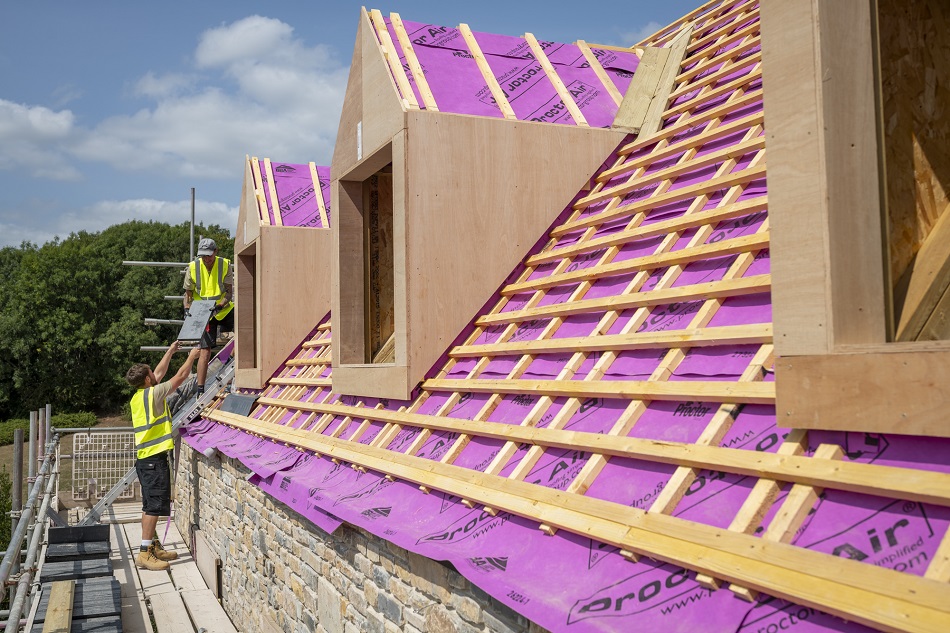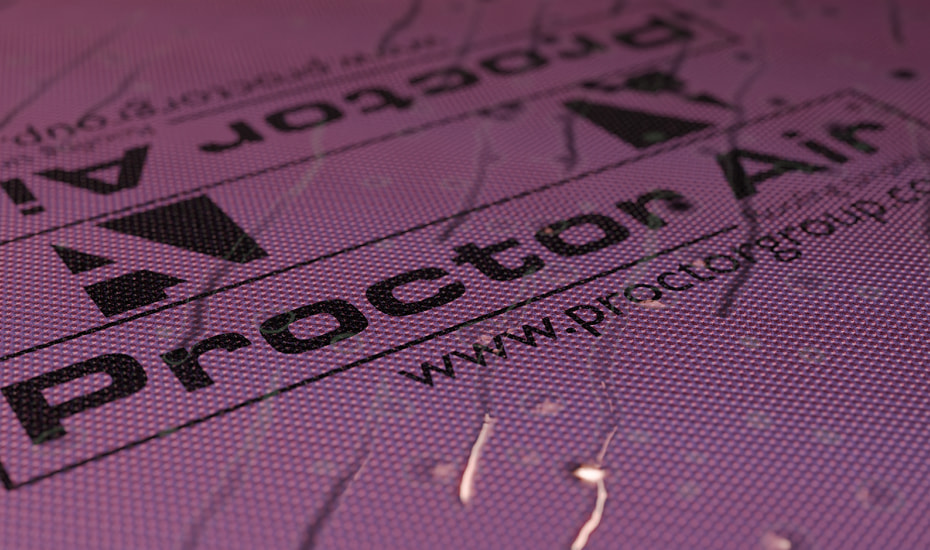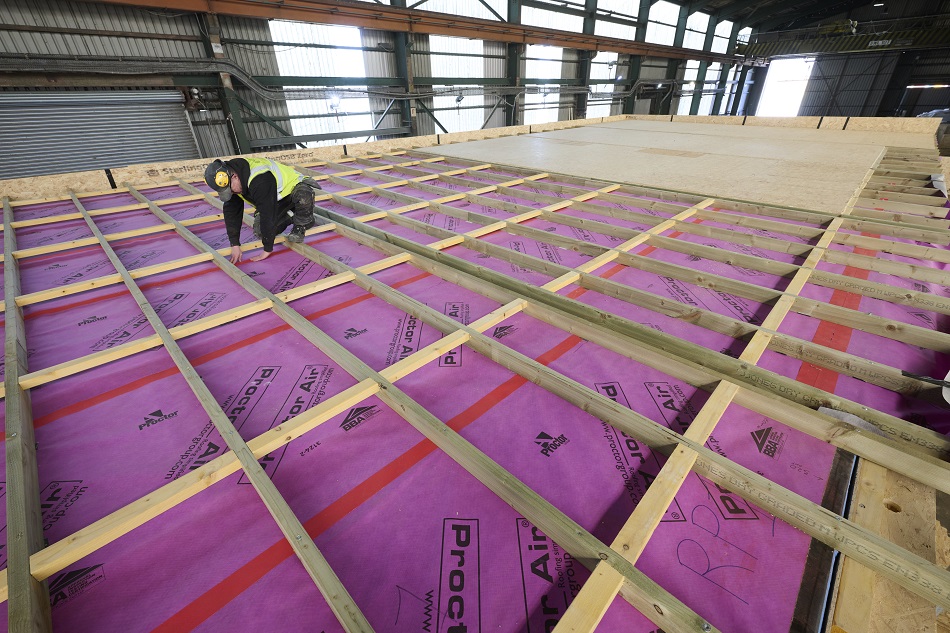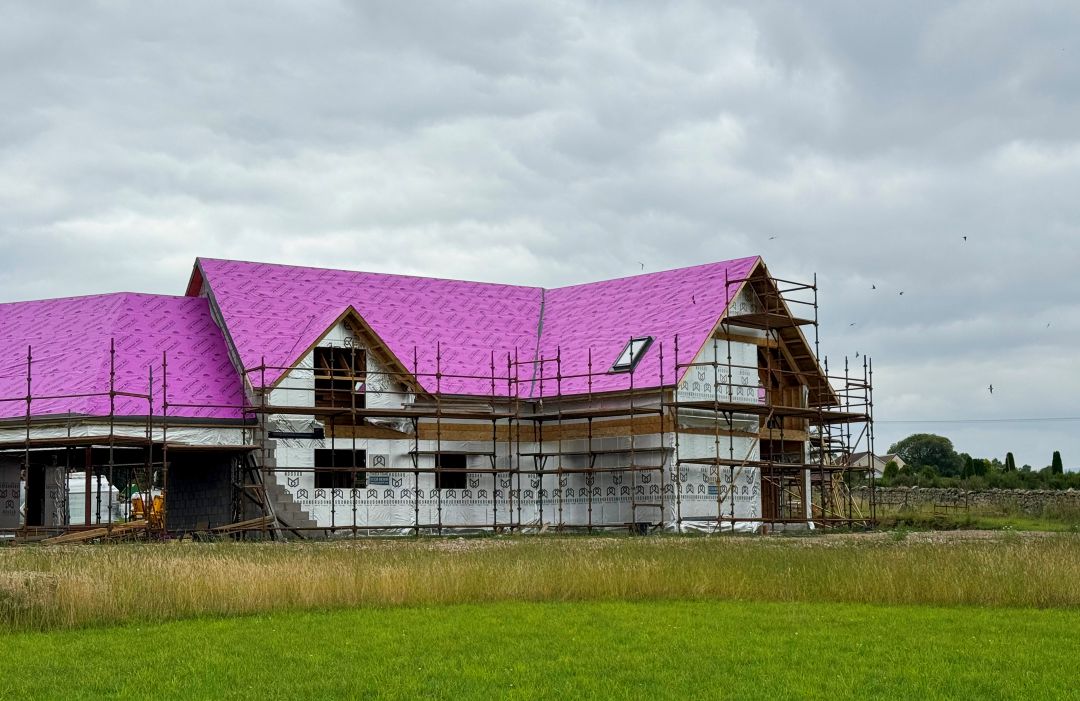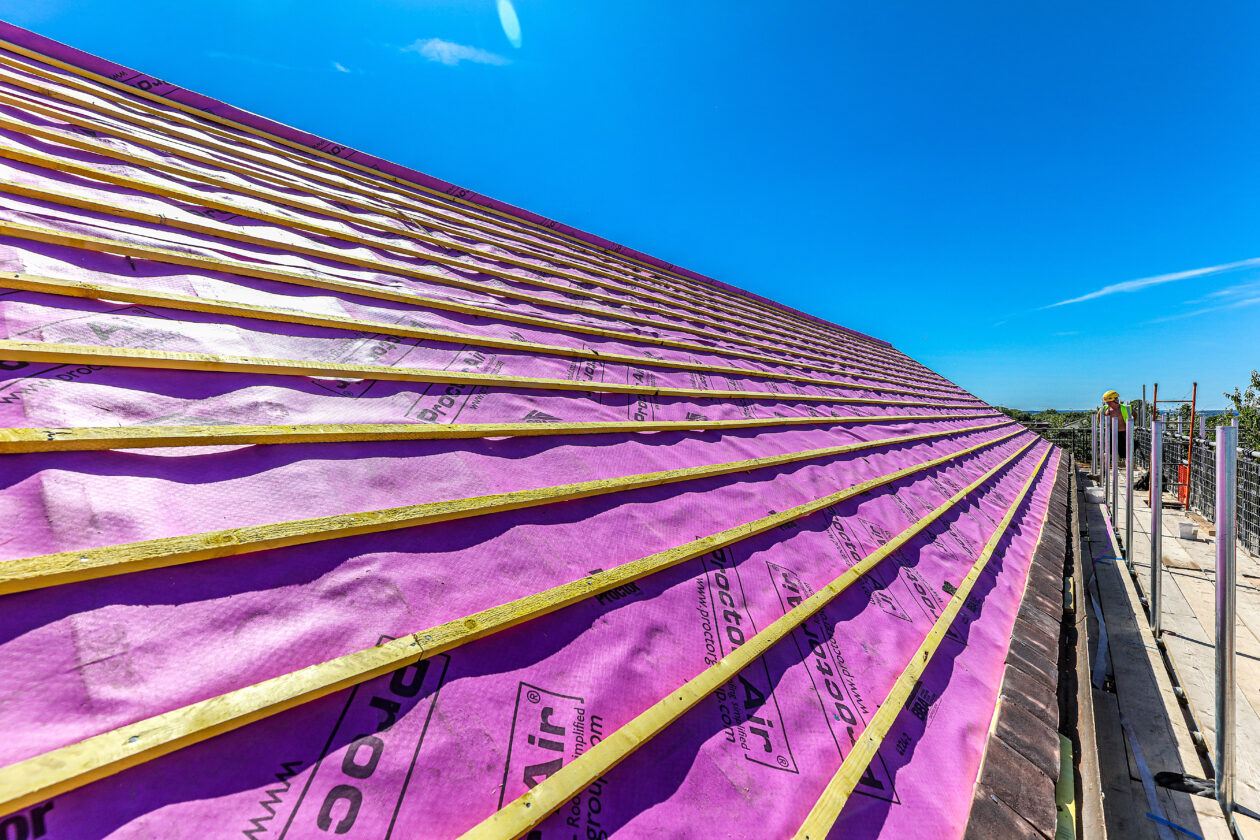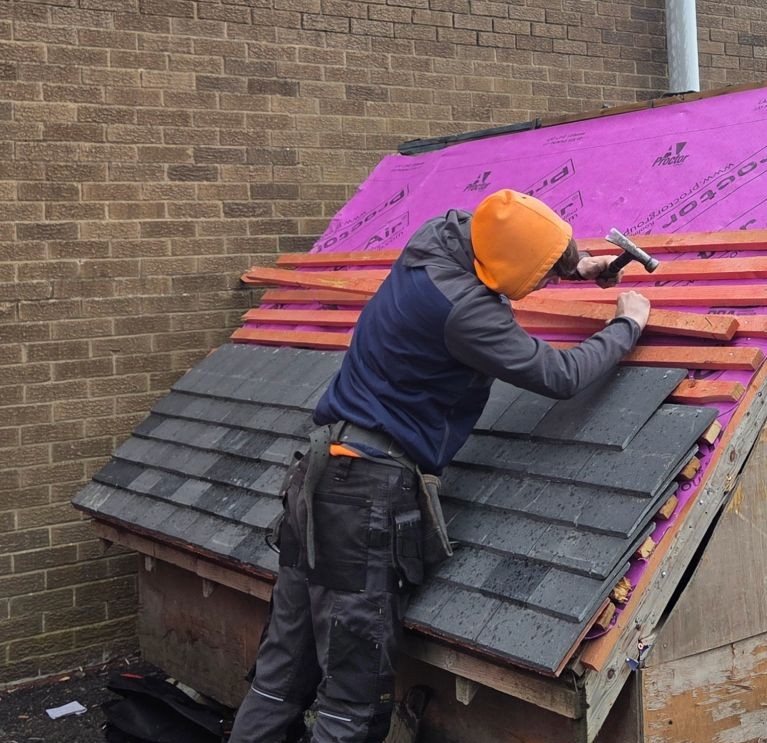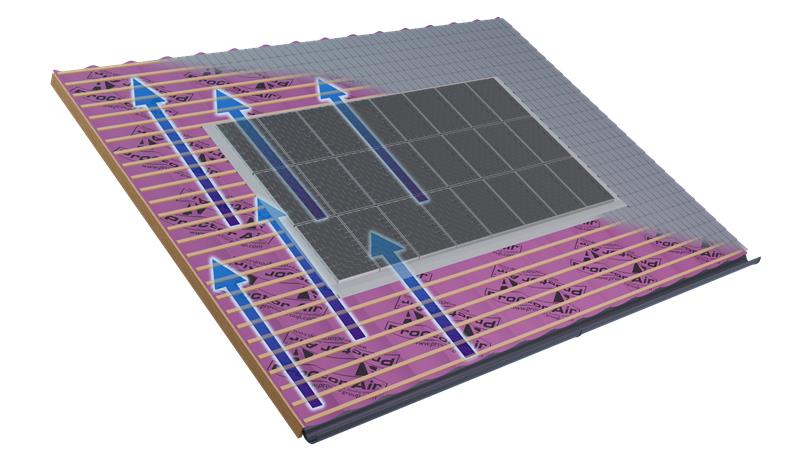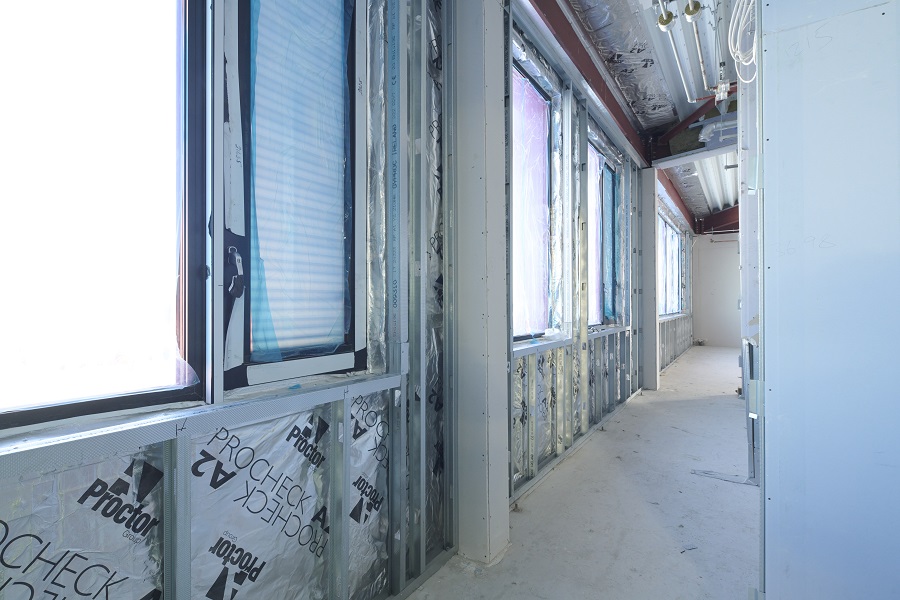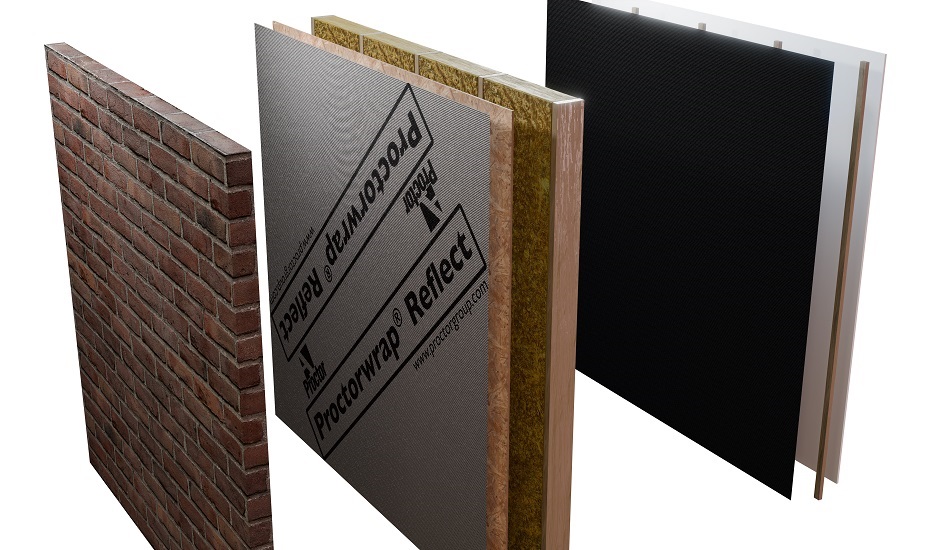Does it matter which way round AVCLs are installed?
In terms of an AVCL’s core function of providing air and vapour resistance, there is no ‘correct’ side that should face the building’s interior.
Many AVCLs offer specific secondary performance characteristics, which often do require the membrane to be installed with one face in a particular direction. Reflective membranes have to face an empty cavity to provide the intended boost to thermal performance, while fire-rated membranes need to face the expected source of a fire.
Products can also be designed with health and safety in mind. For example, the Profoil 861 membrane is offered for high humidity applications which may often be externally installed on a roof, ie metal decking. It has one silver face and one blue face, with the blue face designed to prevent workers on the roof suffering from glare or dazzle.
What is the best way to install an AVCL on SFS stud frames?
Unlike a timber-framed building, it’s not possible to simply staple an AVCL membrane to a steel stud. If mechanical fixing is desirable or preferred, then a suitable flat- or wafer-headed fixing, with a washer-type head, should be used.
Where mechanical fixings could affect the evenness of the internal lining, an alternative is to use a double-sided tape like Probreathe® FR Duo Tape. Depending on the building’s fire strategy, a butyl tape like Probond Tape may also be an option.
What are the minimum fixing requirements for AVCLs?
In their typical position behind the internal lining, AVCLs are fully secured to the substrate when the lining is fixed. The initial fixing of the AVCL is therefore only a temporary fix, so specific fixing centres or double-sided tape coverage don’t need to be observed.
It might be enough to use mechanical fixings at the top, bottom and mid-point of the AVCL length. Where a tape like Probreathe FR Duo Tape is used, it can be applied in full strips, or use 100mm sections at intermittent centres.
Where an AVCL is used in a self-weighted situation (i.e., a ceiling) then it can be adhered, but some mechanical fixings should also be included as part of the temporary works.
If the AVCL is likely to be left exposed for a length of time before the internal lining is fixed, then the choice of temporary fixing should reflect that to avoid leaving edges unsecured and minimize the risk of damage.
What conditions should tapes be stored and used in?
Tapes for jointing overlaps or securing AVCLs to substrates should be stored at a suitable temperature to ensure they are appropriately tacky. The ideal installation temperature range is 5°C to 30°C. Too cold and the tape won’t be tacky or ‘sticky’ enough; too hot and the adhesive will be too tacky.
For optimum adhesion when installing, the substrate should be clean and dry. Dust, oil, or water will all prevent tapes from sticking as well as they are able.
Adhesive integrity is also aided by proper use of a roller during installation. Using a roller is particularly recommended at areas of detailing like lapping AVCLs into window and door reveals.
How can accidental damage and punctures be repaired?
As AVCLs are designed to be impermeable to air and vapour, using tape or membrane patches to seal over damaged/punctured areas doesn’t impact that impermeability.
What is the best choice of AVCL for traditional/historic buildings?
An airtight membrane with variable vapour diffusion rates – such as Procheck® Adapt – responds to changes in humidity. By becoming more vapour-resistant in winter and more vapour-permeable in summer, the building fabric is protected from damaging moisture levels during cold and wet weather. It can then dry out effectively in the warmer and drier months.
This two-way drying ability lends itself to breathable constructions with natural materials, helping to preserve historic buildings. In a changing climate, finding ways to help traditional building fabric cope with different weather extremes is especially important.
Request a Sample
Technical Advice
CAD Detail Review
U-Value Calculation
Book a CPD
Specification Check

